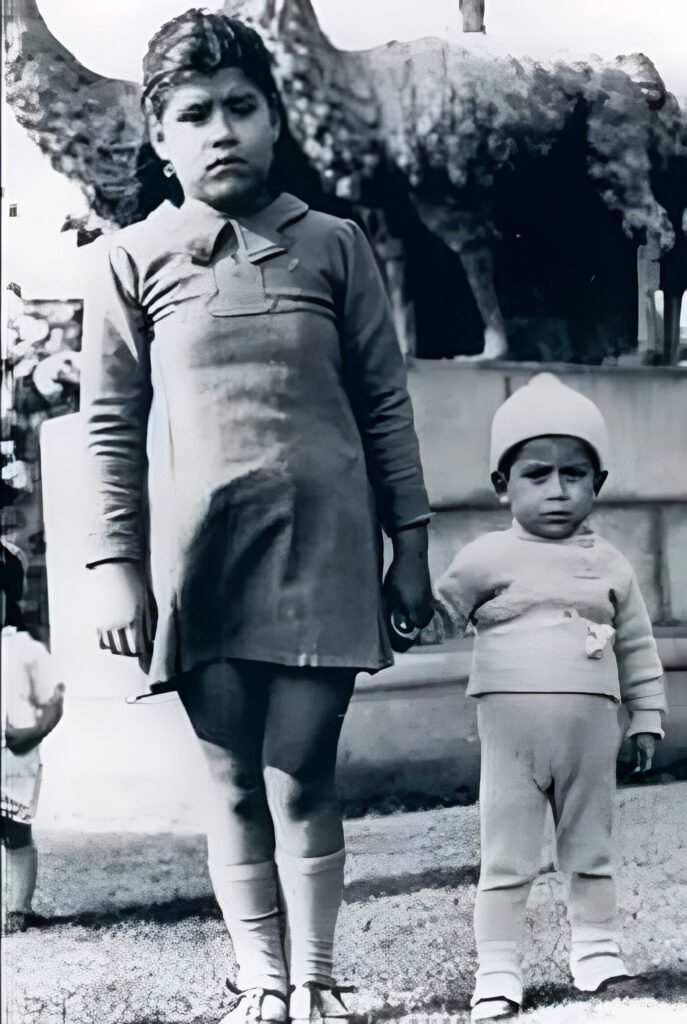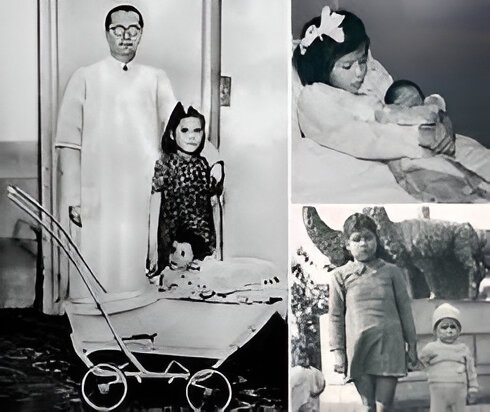Imagine being five years old, just old enough to start school, play with dolls, and learn to write your name. But instead of learning letters, imagine finding out you are about to become a mother. This might sound impossible, but this is the true story of Lina Medina, the youngest mother in history.

Youngest Mother in History: The Background of Lina Medina’s Story
Lina Medina was born in Peru in 1933. Her life was simple and modest, like many other families in rural Peru. Her parents, Tiburcio and Victoria, were stunned when they noticed Lina’s belly growing. At first, they thought it was a tumour, something terribly wrong, so they took her to the doctor.
The doctors examined Lina and discovered something that shocked them all. Lina was not sick with a tumor; she was pregnant. At only five years old, she was about to become the youngest mother in history. Doctors diagnosed her with a rare condition called precocious puberty, where a child’s body begins changing into an adult’s much earlier than usual. This is incredibly rare and often has no known cause.
Also Read-: Rain of Fish: Yoro’s Astonishing Weather Mystery
Medical Examination and Discoveries
The pregnancy continued, and Lina received close medical attention. In 1939, she gave birth to a healthy baby boy through Caesarean section (C-section) because her young body was too small to give birth naturally. This made history, not only because of her age but because the case surprised and challenged medical knowledge.
One of the doctors, Dr. Gerardo Lozada, examined Lina and confirmed her pregnancy. He later helped her deliver the baby and became a significant figure in her life. The case was well-documented, and photos of her in pregnancy were shared worldwide, shocking and fascinating people everywhere.
In fact, Dr. Edmundo Escomel, a respected Peruvian doctor, published a detailed report in a 1939 medical journal, confirming her age and explaining her condition. He wrote, “Her sexual organs were well-developed, suggesting that she was capable of conceiving at such a young age.” This report and other evidence convinced doctors around the world of the truth.
The Social and Cultural Impact of the Youngest Mother in History

News about Lina spread quickly. People around the world were curious, shocked, and sometimes outraged. Journalists traveled from different countries to meet Lina and her family. Some people doubted the story, while others felt pity or compassion for her.
For Lina’s family, it was a challenging time. Her father, Tiburcio, was even arrested on suspicion of abuse, but he was released due to lack of evidence. Even today, no one knows for sure how Lina became pregnant. Her family chose to stay silent about many details, and Lina herself never spoke publicly about her experience.
The baby, named Gerardo after the doctor who delivered him, grew up believing that Lina was his sister. It was only when he turned ten that he discovered Lina was his mother. The family kept the story as private as possible, and Gerardo led a relatively normal life until he sadly passed away at age 40 from bone marrow disease, though it was unrelated to his unusual birth.
Medical and Ethical Reflections on This Unique Case
The case of the youngest mother in history raised many ethical and medical questions. How does precocious puberty happen, and could such a young pregnancy ever be safe? Lina’s story has led to more research into early puberty and rare pregnancies. According to medical experts, cases of extreme early puberty are incredibly rare, affecting about 1 in 10,000 children.
Today, we understand more about this condition, but Lina’s case remains one of the most astonishing. As Dr. Escomel’s report shows, her reproductive organs had developed unusually early, which made pregnancy possible. Her story has also highlighted important questions about child protection, the importance of medical care, and ethical concerns when dealing with unique medical cases.
Also Read-: Mount Everest: The Untold Story Behind the World’s Tallest Mountain
How This Case Relates to Modern Society and Medicine
Although Lina Medina’s story is exceptional, it brings attention to modern issues of childhood pregnancy and the risks involved. In today’s world, child pregnancies are still seen, though they are thankfully rare. The story of the youngest mother in history reminds us of the importance of family and community support for young girls who may face unusual or traumatic situations.
Medical science has advanced, and cases like Lina’s are handled with extreme caution and support. Doctors, psychologists, and child protection agencies now work together to ensure that children who face such circumstances receive proper care.
The story of Lina Medina is not just about the medical facts but also about the compassion, curiosity, and support that can make a difference. While Lina’s case remains unique, it has inspired doctors to study early development and understand rare medical phenomena better. Dr. Lozada and Dr. Escomel’s reports helped make her story known, emphasizing the importance of accurate medical documentation and compassion in care.
Reflecting on the Youngest Mother in History
The story of Lina Medina, the youngest mother in history, is more than just a medical mystery; it is a story of resilience, compassion, and the strength of the human body and spirit. Though her experience was unusual and difficult, Lina grew up quietly, finding ways to live a private and normal life. Her case reminds us of the complexity of life and the surprises that nature can bring.
As we learn more about early puberty and support children’s health worldwide, Lina Medina’s story remains a reminder of how extraordinary and resilient people can be, even in the face of unimaginable circumstances. The youngest mother in history showed us that, sometimes, the most surprising and mysterious stories are the ones that teach us the most.
FAQ
Who was the youngest age to get pregnant?
The youngest age to get pregnant is five years old. Lina Medina from Peru holds the record as the youngest mother in history after giving birth in 1939.
Who was the girl who got pregnant at the age of 5?
Lina Medina, a young girl from Peru, became pregnant at just five years old and gave birth to a healthy baby. She is recognized as the youngest mother in history.
What is the oldest mother?
The oldest confirmed mother is Maria del Carmen Bousada de Lara from Spain, who gave birth to twins at age 66 in 2006 through IVF, setting a record opposite to the youngest mother in history.
How did Lina Medina become pregnant so young?
Lina Medina, the youngest mother in history, became pregnant due to a condition called precocious puberty, which causes early physical development, making conception possible even at a young age.
Which countries have the youngest mothers?
Countries with high rates of young mothers include Niger, Bangladesh, and Chad. Although rare, cases like the youngest mother in history can occur globally, often in regions with limited access to healthcare and education
Is it medically possible for young girls to become pregnant?
Yes, though extremely rare, girls experiencing precocious puberty may become pregnant at a young age. Cases like the youngest mother in history are exceptional and extremely uncommon.
What happened to Lina Medina’s baby?
Lina Medina’s son, Gerardo, was raised as her sibling initially, not learning she was the youngest mother in history until he was 10. Gerardo led a relatively normal life but passed away at age 40.
